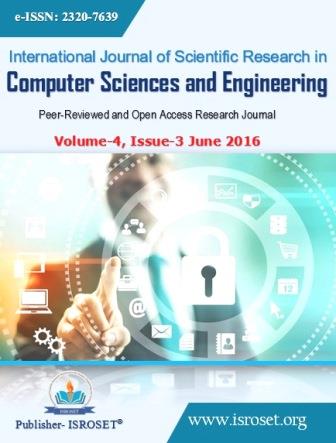Information Communication Technology Integration in Education
Keywords:
ICT, Socially Disadvantage Group, Learner, ICT ProductsAbstract
ICT can be used as a tool to provide high quality educational content for the schools in remote areas. Education of socially disadvantage group is always a challenge for the developing country. The importance of such kind of technology is a need of present scenario. ICT integration in education can provide better environment for those who are not in the main stream of society and geographically distributed students. ICT also allows the academic institutions to reach disadvantaged groups and new international educational markets. ICT increases the flexibility of delivery of education so that learners can access knowledge anytime and from anywhere. Thus, ICT- supported learning can act as a catalyst of education. It also leads to the democratization of education. Various ICT products such as, teleconferencing, video calling, audio cassettes and CD ROMs can be used in education for different purpose. ICT provide a unique platform to all type of learner and it has a great impact in the era of modern educational development.
References
J. Archer, “The link to higher scores”, In The Jossey-Bass Reader on Technology and Learning, CA, pp. 112–125, 2000.
Sanyal, B. C. (2001), “New functions of higher education and ICT to achieve education for all”, International Institute for Educational Planning, Paris, pp.18-32, 2001.
T. Mooij, “Design of educational and ICT conditions to integrate differences in learning: Contextual learning theory and a first transformation step in early education`, Computers in Human Behavior, Vol.23, Issue.3, pp.1499-1530, 2007.
I. Bhattacharya,K. Sharma, “India in the knowledge economy – an electronic paradigm”, International Journal of Educational Management, Vol. 21 No. 6, pp. 543-568, 2007.
S. Chandra, V. Patkar, “ICTS: A catalyst for enriching the learning process and library services in India”, The International Information & Library Review, Vol.39, Issue.1, pp.1-11, 2007.
M. Cross, F. Adam, “ICT Policies and Strategies in Higher Education in South Africa: National and Institutional Pathways”, Higher Education Policy, Vol.20, Issue.11, pp.73-95, 2007.
UNESCO, “Open And Distance Learning Trends, Policy And Strategy Considerations”, Unesco, Paris, pp.1-12, 2002.
Downloads
Published
How to Cite
Issue
Section
License

This work is licensed under a Creative Commons Attribution 4.0 International License.
Authors contributing to this journal agree to publish their articles under the Creative Commons Attribution 4.0 International License, allowing third parties to share their work (copy, distribute, transmit) and to adapt it, under the condition that the authors are given credit and that in the event of reuse or distribution, the terms of this license are made clear.







